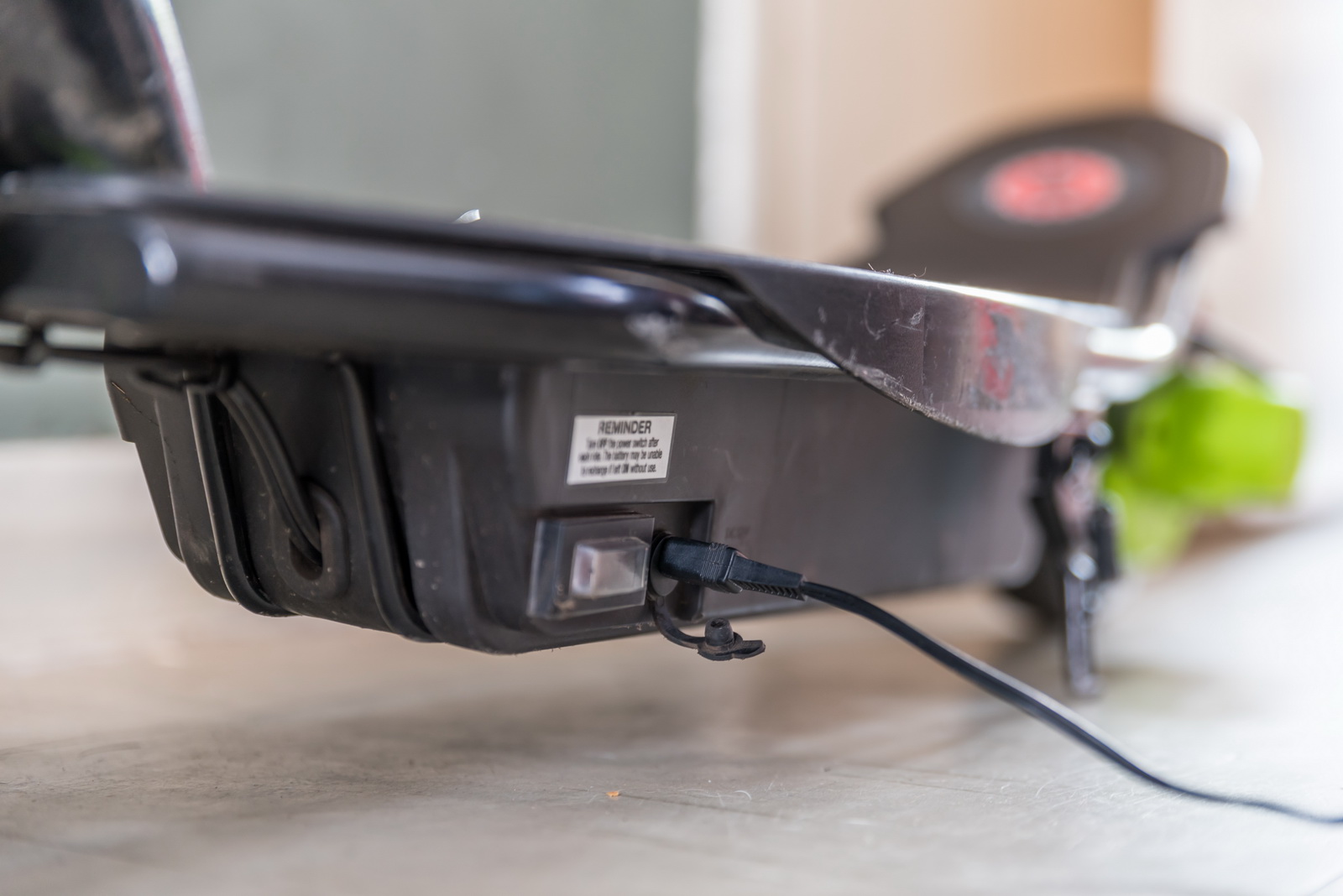I. Introduction
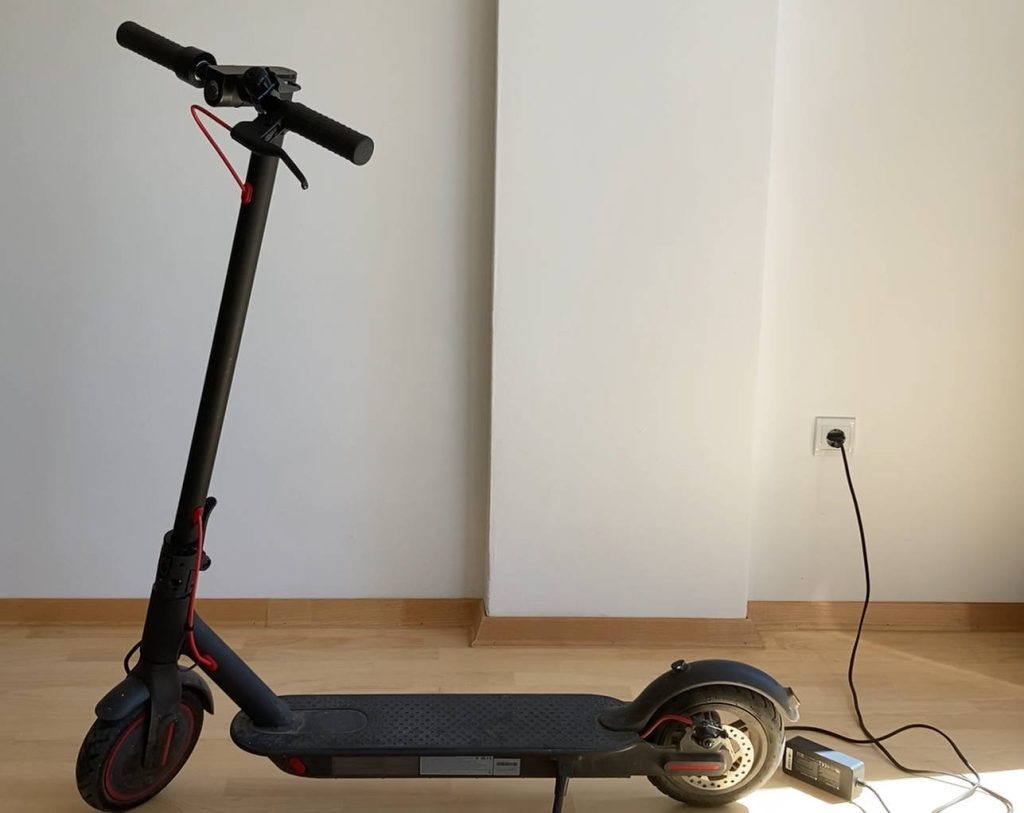
Electric scooters have become increasingly popular in recent years as a sustainable and efficient mode of transportation. With their compact size, ease of use, and low environmental impact, electric scooters have quickly gained favor among urban commuters and travelers alike. However, understanding the battery life and charge duration of these scooters is essential for users to have a reliable and satisfactory experience.
II. Factors Affecting Electric Scooter Battery Life
A. Battery Type and Capacity
Electric scooters typically rely on lithium-ion batteries, which provide high energy density and long-lasting power. However, there are various types of lithium-ion batteries, such as lithium iron phosphate (LiFePO4) and lithium polymer (LiPo), each with distinct properties and performance.
Battery capacity, measured in kilowatt-hours (kWh) or ampere-hours (Ah), is a crucial factor determining the range and duration of charge for electric scooters. Higher capacity batteries can store more energy and allow for longer rides, while lower capacity batteries may require more frequent charging.
B. Riding Conditions and Habits
- Influence of Riding Speed and Acceleration The speed at which an electric scooter is ridden significantly affects its battery life. Higher speeds lead to increased energy consumption, reducing the scooter’s range. Additionally, rapid acceleration and frequent braking can also contribute to higher power consumption.
- Impact of Terrain Terrain plays a significant role in battery life as well. Riding uphill requires more energy compared to riding on level ground. Similarly, rough surfaces, such as gravel or cobblestone, can cause additional resistance and drain the battery faster.
- Effects of Frequent Stops and Starts Frequent stops and starts, such as at traffic lights or intersections, can affect battery consumption. Each time the scooter starts from a stationary position, it requires additional energy to reach its cruising speed, leading to faster battery drain.
C. Temperature and Environmental Factors
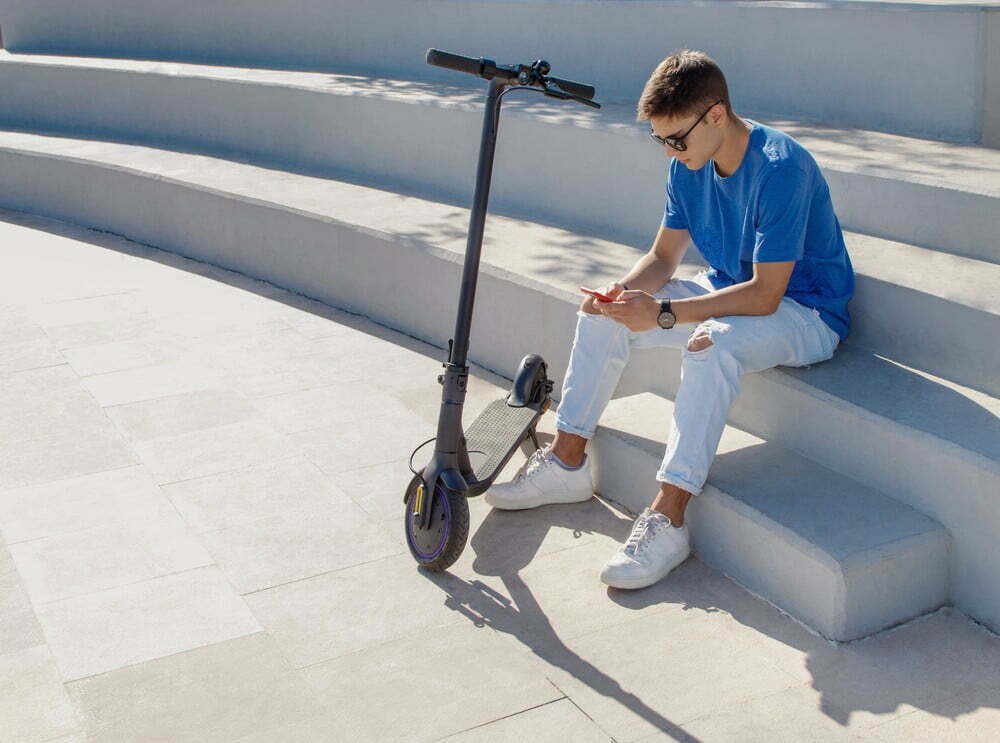
- How Extreme Temperatures Affect Battery Performance Batteries are sensitive to temperature variations, and extreme temperatures can impact their performance and longevity. Cold temperatures can reduce the battery’s capacity and overall range, while high temperatures can accelerate battery degradation.
- Impact of Weather Conditions Weather conditions, such as rain or snow, can affect electric scooter battery life. Riding in wet conditions may expose the scooter’s battery to moisture, potentially causing damage. Additionally, riding in heavy rain or snow can create challenging riding conditions, requiring more energy from the battery.
III. Estimating Battery Range and Charging Time
A. Manufacturer’s Specifications
When it comes to electric scooters, one crucial aspect to consider is the battery range and charging time. Manufacturers generally provide specifications regarding these aspects to give potential buyers an idea of what to expect.
The battery range refers to the distance an electric scooter can travel on a single charge. Manufacturers determine this range based on specific conditions, such as a rider of average weight, on a flat road, with no headwind, at a constant speed. It is important to note that real-world scenarios often differ from these ideal conditions.
Similarly, the charging time specified by manufacturers may vary under different circumstances. The charging time indicated is typically an estimation based on a charged battery from 0% to 100%. However, various factors can influence the actual charging time required, including the type of charger used and the current battery charge level.
Understanding the limitations and variables involved in the manufacturer’s estimates is crucial. Factors such as rider weight, terrain, speed, weather conditions, and battery age can all affect the actual battery range and charging time. It is essential to keep these variables in mind when determining the practicality of an electric scooter for your individual needs.
B. Real-World Scenarios
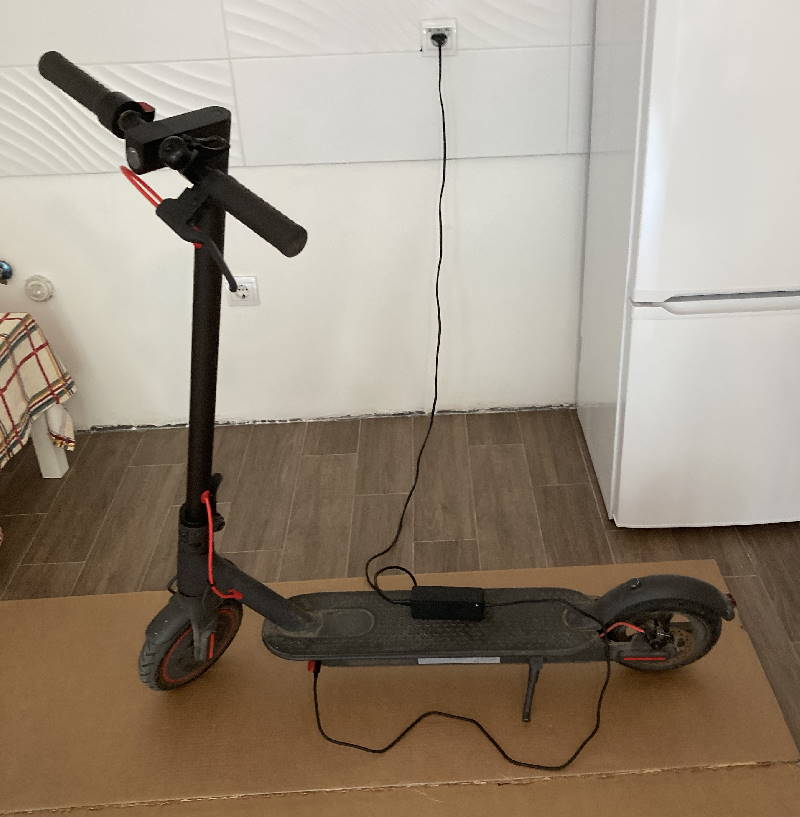
To get a more accurate estimation of battery range during actual usage, it is important to consider various factors that may affect it. Some of these factors include:
- Rider weight: Heavier riders typically require more power to propel the scooter, which can reduce the battery range. It is vital to check the weight limitations specified by the manufacturer.
- Terrain: Riding on flat roads requires less power compared to riding uphill or on rough terrain. Uphills and uneven surfaces can significantly impact the battery range.
- Speed: Riding at higher speeds consumes more energy and can reduce the battery range. It is recommended to maintain a steady speed to optimize battery usage.
- Weather conditions: Strong headwinds or riding against intense wind resistance can decrease the battery range. Similarly, extreme temperatures, either hot or cold, can affect battery performance.
To maximize battery life and extend the distance covered, certain techniques can be employed:
- Maintain a consistent speed: Avoid rapid acceleration and deceleration, as this uses more energy. A steady speed ensures efficient battery usage.
- Limit the use of auxiliary features: Non-essential features such as headlights, Bluetooth connectivity, and speaker systems can drain the battery faster. Use them sparingly when needed.
- Optimize tire pressure: Keeping the scooter’s tires properly inflated reduces rolling resistance, improving energy efficiency and extending the battery range.
- Take advantage of regenerative braking: Some electric scooters are equipped with regenerative braking systems. These systems convert kinetic energy into battery power when braking, effectively extending the battery range.
IV. Optimizing Battery Life and Charging Efficiency
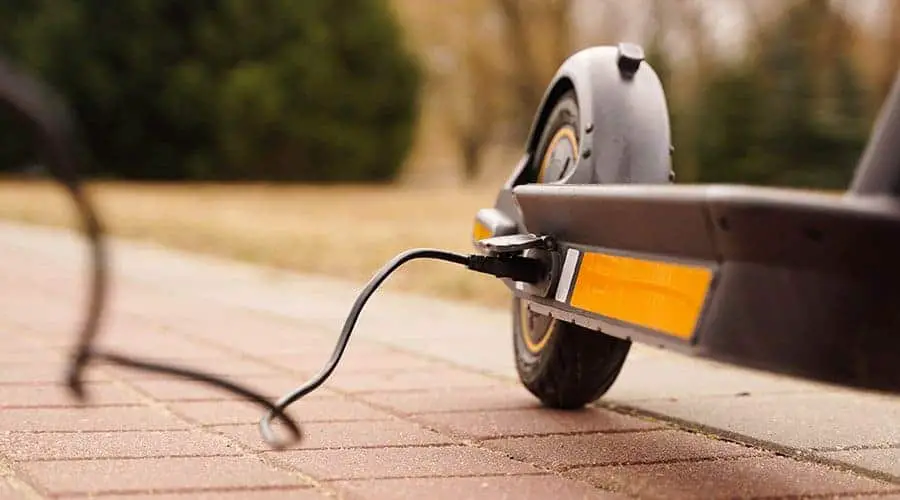
A. Proper Battery Maintenance
Regular charging and avoiding complete discharges are critical for maintaining the health and longevity of your electric scooter’s battery. Lithium-ion batteries commonly used in electric scooters perform best when kept between 20% and 80% charge. Complete discharges or leaving the battery fully charged for extended periods can degrade its capacity over time.
When storing the scooter for an extended period of non-usage, it is essential to follow proper battery maintenance practices:
- Charge before storage: Before storing the electric scooter, ensure the battery is adequately charged, ideally between 40% and 60%. This level of charge helps preserve the battery’s capacity during the storage period.
- Store in a cool and dry place: High temperatures can negatively affect the battery’s performance and lifespan. Find a cool and dry location to store the scooter and prevent exposing it to extreme temperature fluctuations.
- Regularly charge the battery: If storing the electric scooter for an extended period, it is crucial to recharge the battery at least once every three months to prevent it from fully discharging.
B. Smart Charging Practices
To optimize battery life and efficiency, it is essential to follow smart charging practices:
- Use the right charger: Always use the charger provided by the manufacturer or a compatible charger specifically designed for your electric scooter. Using an incompatible charger can damage the battery and affect its performance.
- Avoid overcharging: It is crucial not to leave the battery connected to the charger after it has reached 100% charge. Overcharging can degrade the battery’s capacity over time.
- Optimal charging cycles: Lithium-ion batteries benefit from partial charge cycles instead of repeatedly fully charging and discharging them. Frequent, shorter charging sessions help maintain the battery’s health.
- Avoid fast charging if not necessary: While fast charging may be convenient, it can cause stress on the battery and decrease its overall lifespan. When possible, opt for regular charging instead.
C. Upgrading Battery Technology
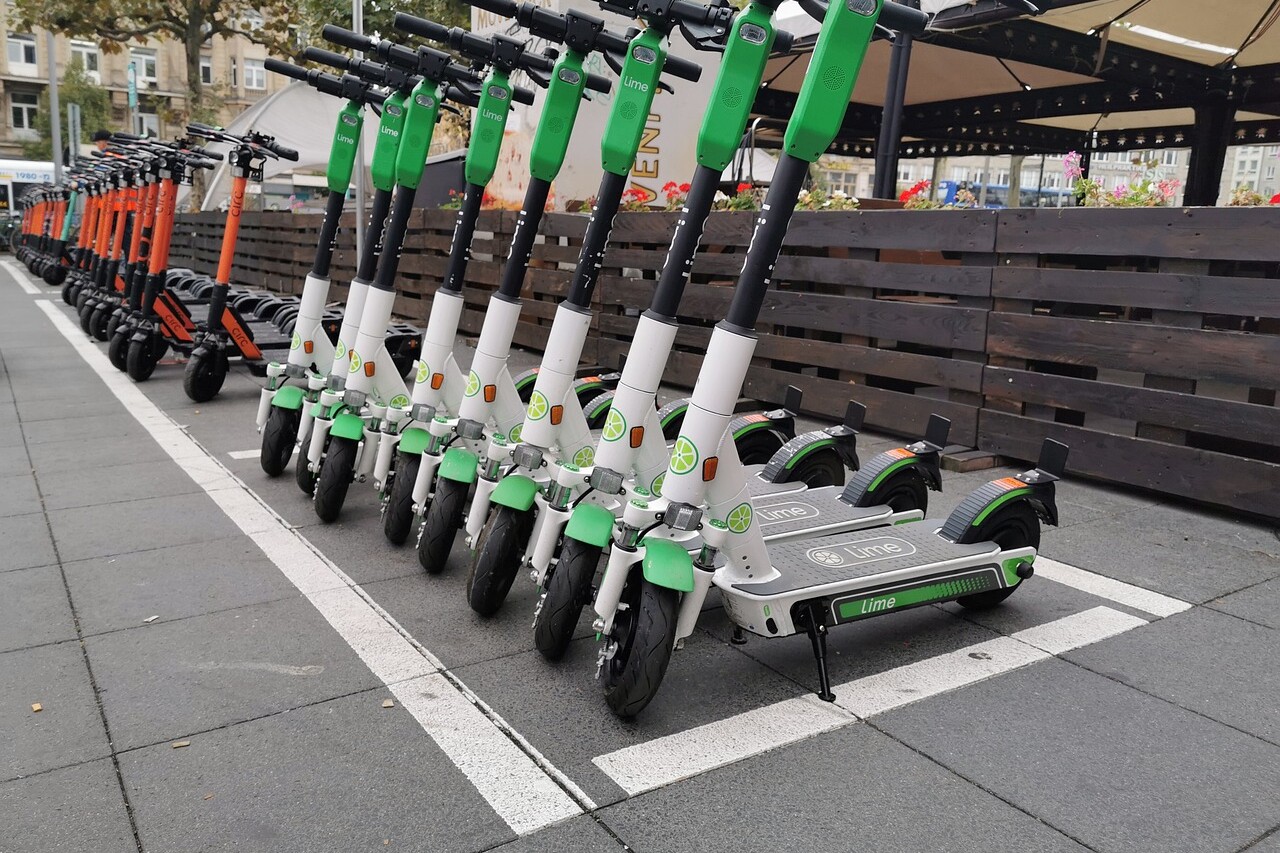
As technology continues to advance, newer and more efficient battery options are becoming available for electric scooters. Upgrading to higher-capacity or longer-lasting batteries can offer improved performance and extended battery range.
When considering upgrading the battery technology of your electric scooter, it is important to consider several factors:
- Compatibility: Ensure that the upgraded battery is compatible with your scooter’s existing electrical system and voltage requirements. Check with the manufacturer or a professional to determine compatibility.
- Cost vs. Benefit: Evaluate the cost of the battery upgrade and compare it to the potential increase in battery range and performance. Consider whether the benefits outweigh the investment.
- Installation: Determine if the battery upgrade requires any modifications to the scooter or if it can be easily installed. Some upgrades may require professional installation or adjustments to the scooter’s electrical system.
- Manufacturer’s Warranty: Check if the battery upgrade affects the manufacturer’s warranty. Some upgrades may void the warranty, so it is important to study the terms and conditions thoroughly.
In conclusion, understanding battery range and charging time estimation is crucial when considering an electric scooter. Manufacturers provide specifications based on certain conditions, but real-world scenarios can differ significantly. By considering factors such as rider weight, terrain, speed, and weather conditions, you can get a better idea of the scooter’s estimated battery range. Optimizing battery life through proper maintenance and charging practices, as well as exploring upgrades in battery technology, can enhance the overall performance and efficiency of your electric scooter.
